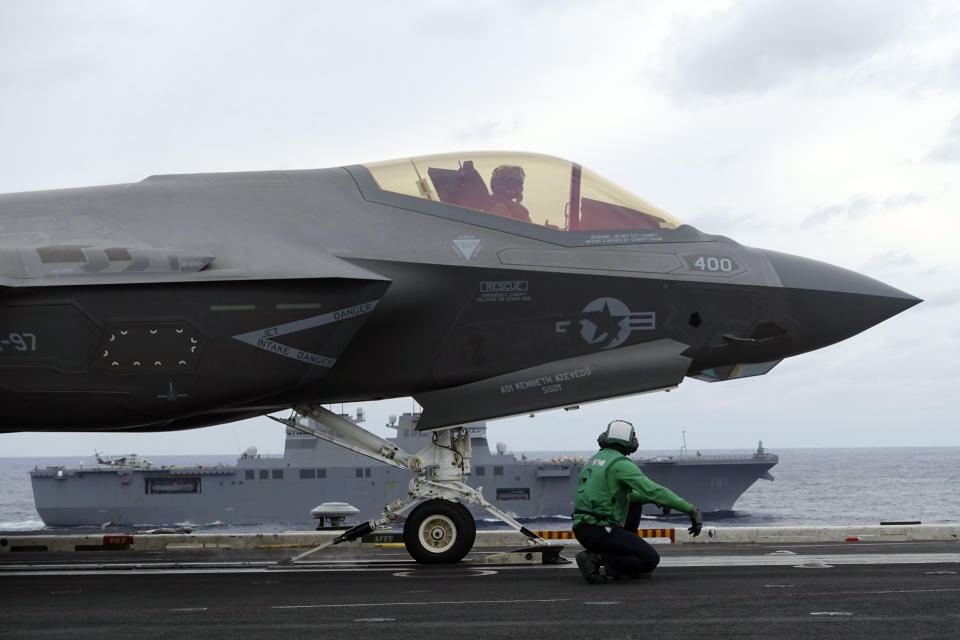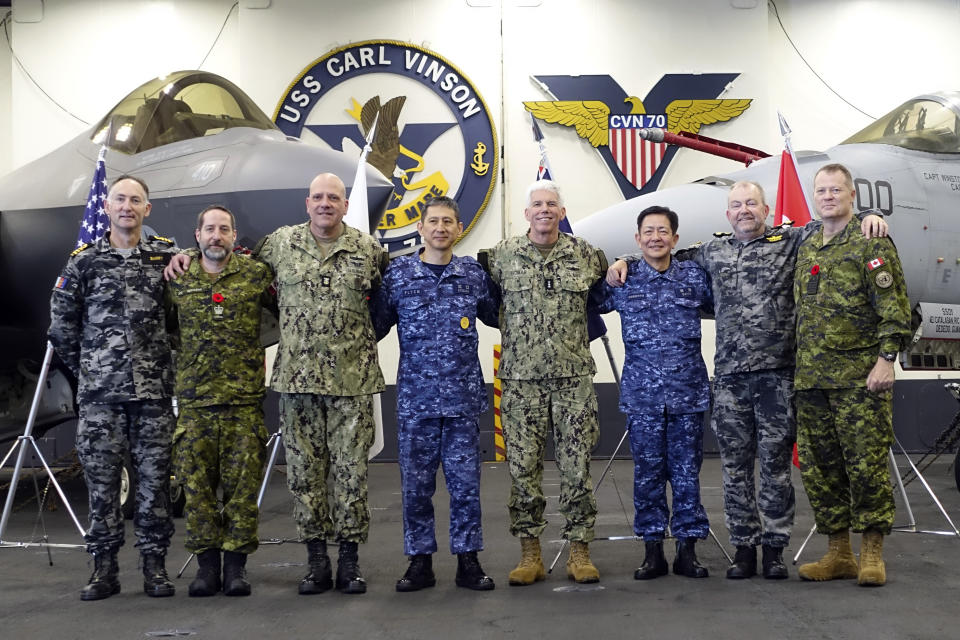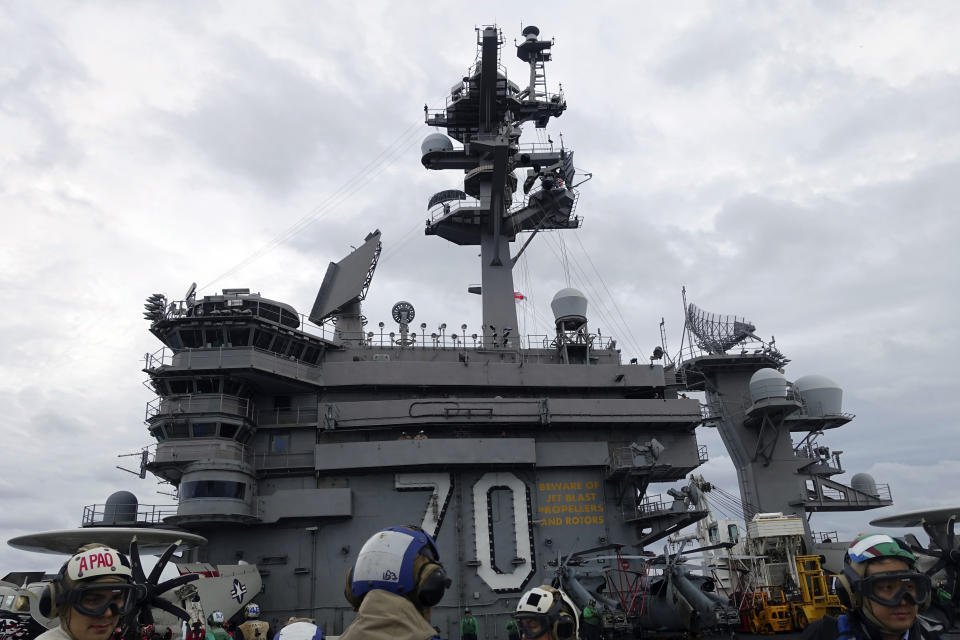Philippines joins Japan-led naval drills as brushes with China rise in the disputed South China Sea
ABOARD THE USS CARL VINSON (AP) — Japan led an annual multinational naval exercise that included the Philippines as an observer for the first time, as Filipino coast guard vessels are increasingly harassed by China in the disputed South China Sea.
The Annualex exercises that began Saturday off Japan's coast also included the United States, Australia and Canada. Their aim is to demonstrate and increase ways the navies can work together, and show their presence and commitment to defend a “free and open” Indo-Pacific, which the allies say is hampered by China's growing ambitions that include sweeping territorial claims.
On Saturday, a selected group of journalists, including The Associated Press, flew on an V-22 Osprey aircraft to the USS Carl Vinson aircraft carrier to observe takeoffs and landings of F-35C “Lightning” stealth fighters, as well as F/A-18 Super Hornet jets and E/A-18 Growlers. The Japanese destroyer Hyuga showed its presence next to the carrier.
The exercise comes in the wake of the latest confrontation between the Philippines and China in the South China Sea on Friday, adding to the territorial disputes that risk turning into a more serious armed conflict.
The Philippines accused a Chinese coast guard ship and accompanying vessels of dangerous maneuvers and blasting a Philippine supply ship with a water cannon, while China defended its action as appropriate.
Territorial conflicts in the South China Sea involving China, the Philippines, Vietnam, Malaysia, Taiwan and Brunei have long been regarded as a potential flashpoint and a delicate fault line in the U.S.-China rivalry.
“The Philippines is an extremely important country for Japan, and we hope to cooperate with the Philippine navy at every opportunity in the future,” Japan Maritime Self-Defense Force Commander-in-Chief Akira Saito said. He added that the drills are not targeting any specific nation and that the Philippines' participation was decided before its latest encounter with China.
About 30 navy ships and 40 warplanes from the four countries, as well as Philippine navy personnel, are participating in the joint exercises that also address new threats such as cyber, space and information warfare, Saito said.
U.S. Seventh Fleet Commander Vice Adm. Karl Thomas said that the vast majority of nations in this part of the world are like-minded and share ideas about maritime security and prosperity, and “the more our navies work together, more multilateral our exercises are, the greater the security for this region.”
Thomas said the U.S. Navy deploys two aircraft carriers, the USS Carl Vinson and the USS Ronald Reagan, in the Pacific despite “unfortunate situations happening in other parts of the world."
Japan and the United States have stepped up defense cooperation and also expanded it to include Australia and the Philippines. The allies share concern about China's growing assertiveness and tensions over self-ruled Taiwan, which China claims as its own to be united by force if necessary.
In early November, Japanese Prime Minister Fumio Kishida and Philippine President Ferdinand Marcos Jr. agreed to start negotiations on a key security pact that would allow their troops to enter each other's territory for joint military exercises. Japan also pledged a provision of surveillance radars to the Philippine navy under a new military grant.



